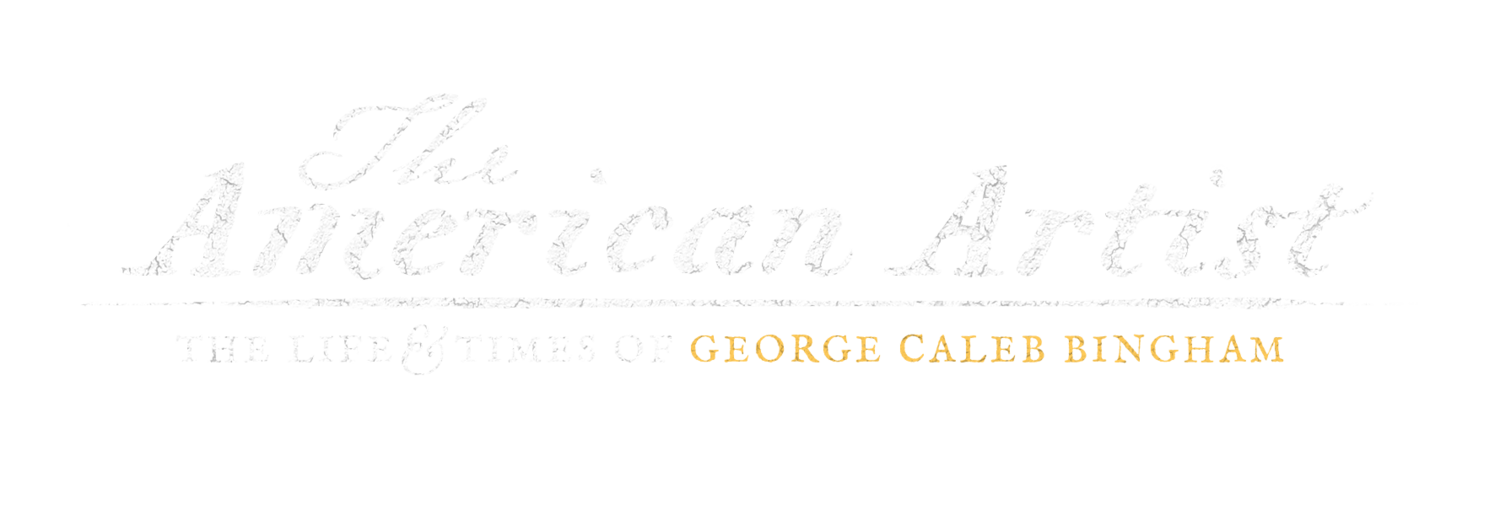One of our goals in making The American Artist: The Life & Times of George Caleb Bingham is to introduce Bingham and his art to people who aren’t familiar with or don’t recognize the significance of his work.
And perhaps no painting of Bingham’s is more significant than Bingham's Fur Traders Descending The Missouri, 1845.
It’s one of Bingham’s most famous paintings. And it was long forgotten until it was “rediscovered” by the art world when it’s current owner, The Metropolitan Museum of Art, purchased it in 1933.
The painting is a remarkable work if only because prior to this painting, Bingham was best-known for his portraits. While there are some trademark Bingham elements in Fur Traders Descending The Missouri, 1845 — a balance of horizontals and diagonals to fix figures at right angles — there was little in his work up to this point to suggest he was poised to create a masterpiece that signaled his growth as an artist and announcing his place as a one of the first truly American fine artists.
Fur Traders Descending The Missouri, 1845 by George Caleb Bingham. Image courtesy of the Metropolitan Museum of Art.
The painting is one of several, along with many sketches, that he brought with him on a spring trip to St. Louis from central Missouri in 1845. Technically it’s remarkable for its spare, geometric composition and deft brushstrokes.
Also it’s a prime example of the Luminism style at the forefront of painting in the mid-19th century. It features the effects of light playing over landscapes and emphasizes tranquillity with its still, contemplative waters and soft, delicate sky.
The painting is also significant in that it captures a quickly vanishing American frontier and lifestyle. Or as they put it on The Met website, the painting’s “solemn, motionless scene immortalizes the vanished world of the American frontier, constructed for a northeastern audience.”
Author and art historian Susan Benford points out that the idyllic environment and its dream-like aspects of the painting are also at odds with the state of trapping at that time.
She writes that, “by 1845, the year in which Bingham created this now famous artwork, the profession was dominated by trading companies rather than the French voyagers who first pioneered the trade.”
One of the more historically interesting elements of the painting is the liberty cap worn by the man on the right.
Defined as “a brimless, limp, conical cap fitting snugly around the head,” the cap was used as a symbol of liberty by the French revolutionaries and was also worn in the United States in the 18th and 19th centuries. Also called Phrygian cap it was originally given to slaves in ancient Rome upon their freedom from bondage.
And notice that dark creature on the left? Is that a cat? Or a bear cub? Bedford writes that it’s “either a tethered pet bear (according to Marilyn Stokstad, author of Art History), or a cat (according to Ingo F. Walther, editor of Masterpieces of Western Art).” Researchers at the Met have concluded that it is a bear.
Bingham’s skill and craftsmanship, along with the emotions in his work that run the gamut from the tragic to the playful, make us envious of those lucky enough to be discovering this American treasure for the first time.
For sneak previews, showings and exclusive content on history, art and filmmaking, please join our mail list.




















